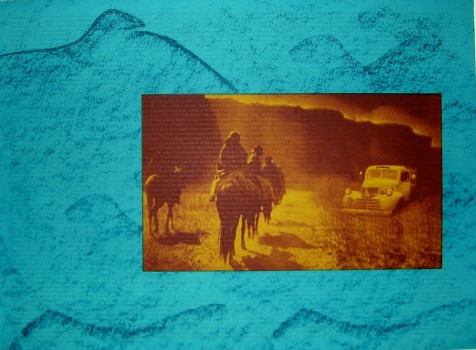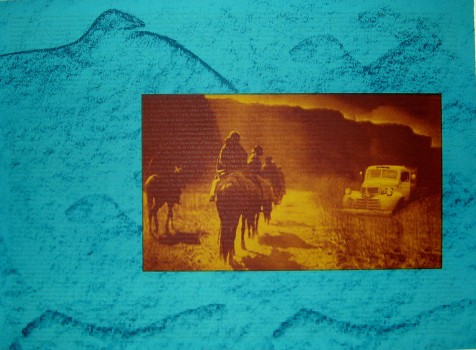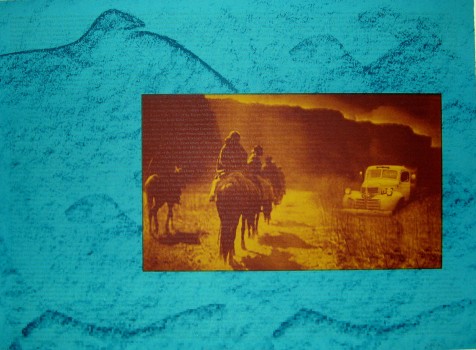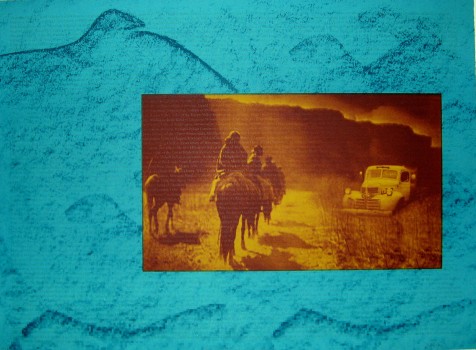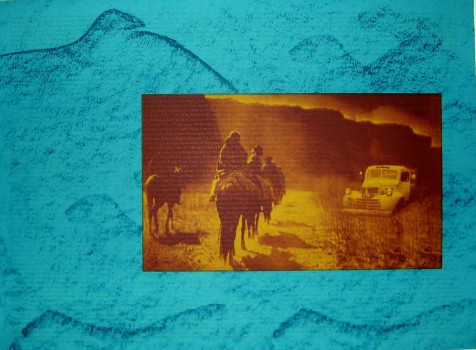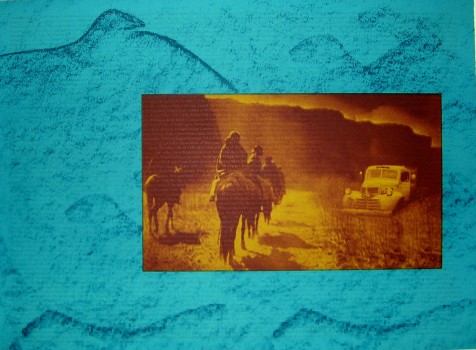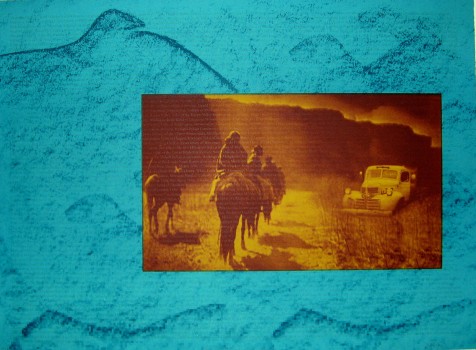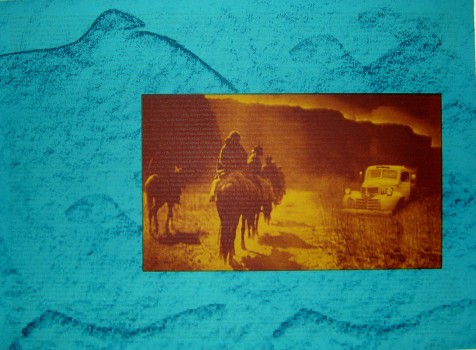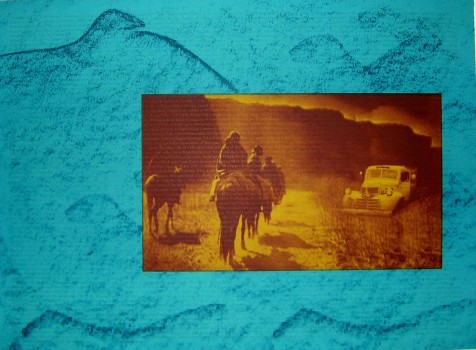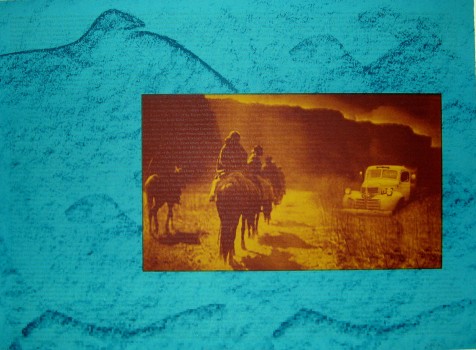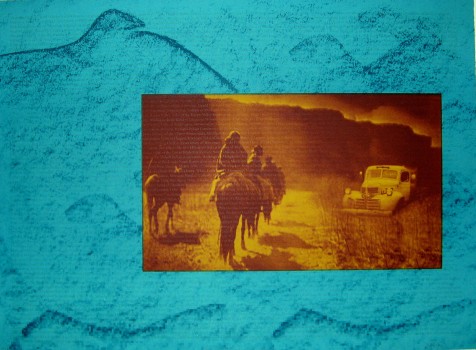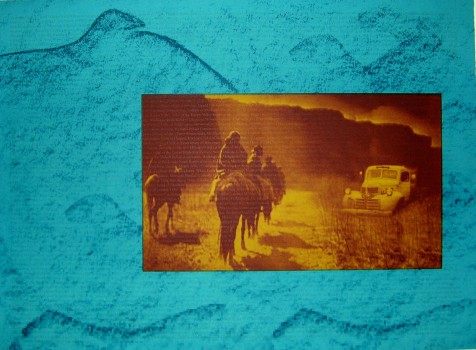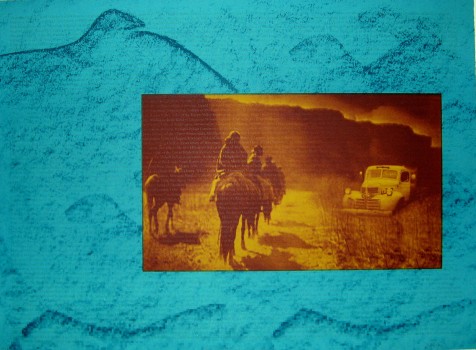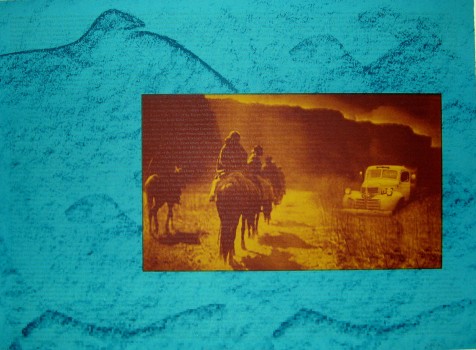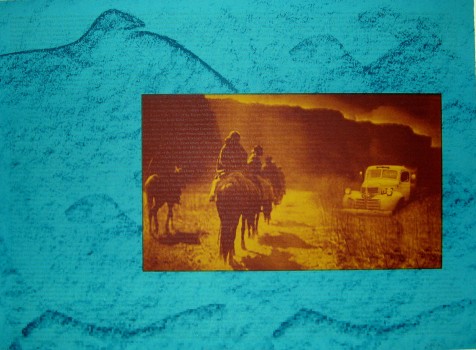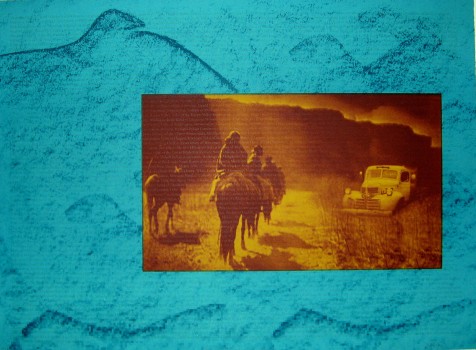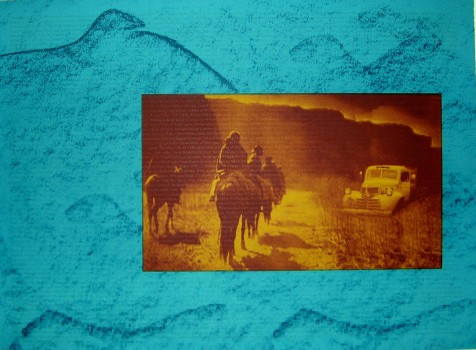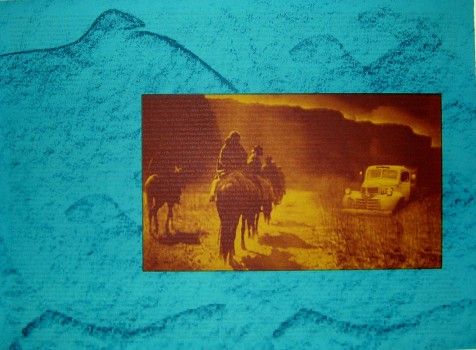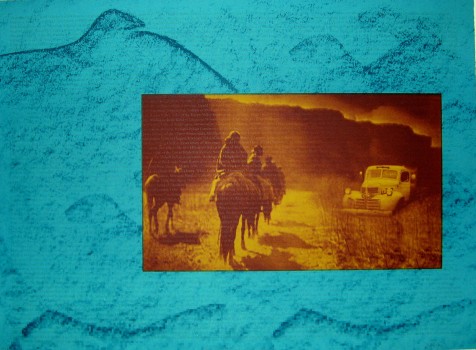
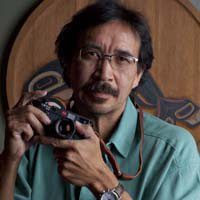
Photographer and printmaker Larry McNeil has been creating socially-engaged images since he began his photographic career as a young man. McNeil’s work is largely informed by his Native American identity, and his awareness of the intersections and conflicts within American culture. “You don’t have any choice in who you’re born to,” he says. “It always shows up in your artwork, even if you try and keep it out. That’s the fun part. That means that there are layers to your art, that even if you try and keep it literal and very conscious, there are still intuitive parts of who you are that show up even if you don’t want it to, or if you’re not aware of it.” Always aware of his own distinct cultural perspective, McNeil takes on weighty societal issues, from climate change to racial justice. Still he maintains a sense of levity throughout his work.
McNeil’s lithograph First Light, Winter Solstice injects a dose of subversive humor into a familiar, iconic depiction of American Indians. He challenges the romanticized view of the so-called “vanishing race” popularized by photographer Edward Curtis, who chronicled Indian tribal life during the late 19th and early 20th centuries. McNeil provides a vivid turquoise backdrop, with a raven spreading its wings, to Curtis’s nostalgic sepia-toned photograph of Indians on horseback.
The raven is a hint that Curtis’s perspective might be skewed, because in Tinglit tribal mythology, the bird is “a poetic rascal” who “frequently amuses himself” by subliminally pointing out hidden truths, said McNeil. There is another hint, too: McNeil has added a dilapidated old car to the Curtis photograph, which he identifies as the sort of “rez car” frequently seen on tribal reservations.
“A rez car is often old and beat up, sometimes barely running,” he said. “Rez cars have become part of our identity. I am playing with the perception that Indians are only in the past and [I am] bringing them right into the present. If we can take outdated, stereotypical ideas and laugh about them, we can acknowledge that they are indeed a bit absurd and we can move on in a good way.”
Ultimately, McNeil’s photographs explore the question of what it means to be human in today’s world. While people tend to focus on what makes people different from one another, his work seeks to show the commonality of the human experience. As he puts it, “Photography and other creative media can break down these artificial barriers that we’ve set up for ourselves.”
Website
http://www.larrymcneil.com
